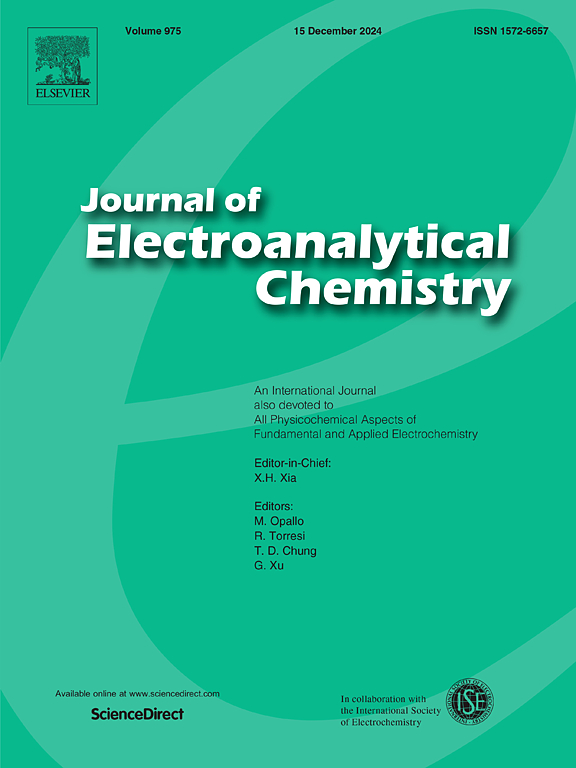Star-shaped ZIF-derived carbon-based electrocatalysts with FeNX active sites for enhanced oxygen reduction reaction in high-performance zinc-air batteries
IF 4.1
3区 化学
Q1 CHEMISTRY, ANALYTICAL
引用次数: 0
Abstract
A star-shaped Oxygen reduction reaction (ORR) catalyst, Fe-NSC-2, with the growth of carbon nanotubes is prepared. Nitrogen-rich iron phthalocyanine (FePc) is successfully doped into a zeolite imidazolate framework (ZIF-8) by the grinding and pyrolysis methods. Doping FePc into ZIF-8, utilizing its nitrogen ligands and macrocyclic structure, enhances metal dispersion and reinforces the metal-nitrogen (Fe-NX) configuration. Additionally, this arrangement promotes the graphitization of the three-dimensional porous carbon following pyrolysis. Unexpectedly, the synthesized Fe-NSC-2 catalyst is found to exhibit excellent ORR electrocatalytic activity in alkaline solutions compared to Pt/C. The Zinc-air batteries (ZAB), in which Fe-NSC-2 is employed as the air cathode, is found to exhibit remarkable performance and stability. This provides an economically viable preparation strategy for exploring efficient catalysts for the ORR.
求助全文
约1分钟内获得全文
求助全文
来源期刊
CiteScore
7.80
自引率
6.70%
发文量
912
审稿时长
2.4 months
期刊介绍:
The Journal of Electroanalytical Chemistry is the foremost international journal devoted to the interdisciplinary subject of electrochemistry in all its aspects, theoretical as well as applied.
Electrochemistry is a wide ranging area that is in a state of continuous evolution. Rather than compiling a long list of topics covered by the Journal, the editors would like to draw particular attention to the key issues of novelty, topicality and quality. Papers should present new and interesting electrochemical science in a way that is accessible to the reader. The presentation and discussion should be at a level that is consistent with the international status of the Journal. Reports describing the application of well-established techniques to problems that are essentially technical will not be accepted. Similarly, papers that report observations but fail to provide adequate interpretation will be rejected by the Editors. Papers dealing with technical electrochemistry should be submitted to other specialist journals unless the authors can show that their work provides substantially new insights into electrochemical processes.

 求助内容:
求助内容: 应助结果提醒方式:
应助结果提醒方式:


